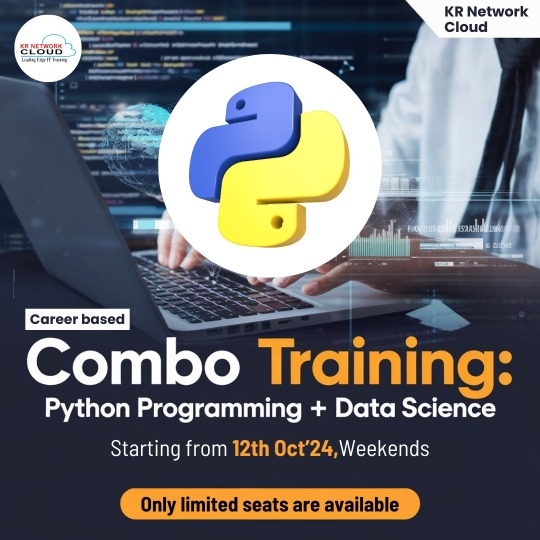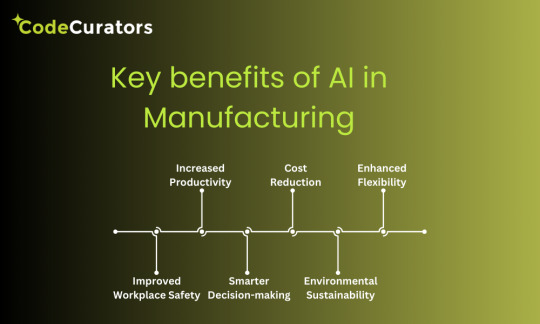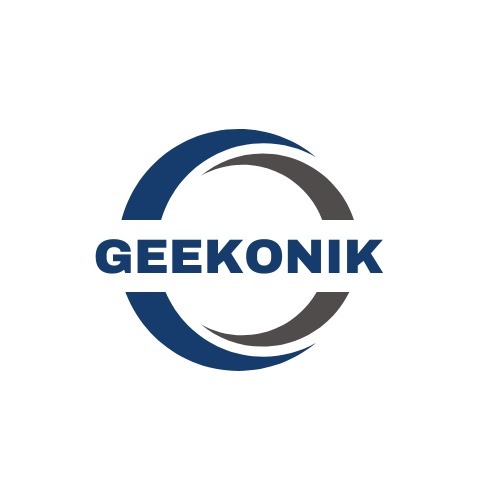#software engineering future
Explore tagged Tumblr posts
Text
Understanding Software Engineering: A Comprehensive Guide
Introduction to Software Engineering: In today’s digital age, software plays a crucial role in nearly every aspect of our lives, from communication and entertainment to business and healthcare. But what exactly is software engineering, and why is it essential?

In this blog post, we’ll explore the fundamentals of software engineering, its principles, processes, and its significance in building…
Understanding Software Engineering: A Comprehensive Guide" explores the fundamentals, principles, and best practices of software engineering. It covers key topics like software development life cycle (SDLC), programming methodologies, design patterns, testing, and project management.
This guide is ideal for beginners and professionals looking to enhance their understanding of modern software development processes and industry standards.
#cs vs software engineering#day in the life of a software engineer#engineering#is software engineering good?#software#software developer#software development#software engineer#software engineer day in life#software engineer vlog#Software Engineering#software engineering career#software engineering degree#software engineering future#software engineering internship#software engineering major#software engineering salary#software engineering student
1 note
·
View note
Text
grading papers for computer security class today and like 75% of the submissions are using chatgpt or something of the sort BECAUSE THE ANSWERS ARE ALL WRONG

#bruh look at the state of future software engineers#YOUR DATA IS NOT SAFE#DO NOT USE ANYTHING#THESE PEOPLE DONT EVEN CARE#we need to jack up the difficulty of this class because i do NOT want people to get away with cheating anymore#yap
9 notes
·
View notes
Text
What Future Trends in Software Engineering Can Be Shaped by C++
The direction of innovation and advancement in the broad field of software engineering is greatly impacted by programming languages. C++ is a well-known programming language that is very efficient, versatile, and has excellent performance. In terms of the future, C++ will have a significant influence on software engineering, setting trends and encouraging innovation in a variety of fields.
In this blog, we'll look at three key areas where the shift to a dynamic future could be led by C++ developers.
1. High-Performance Computing (HPC) & Parallel Processing
Driving Scalability with Multithreading
Within high-performance computing (HPC), where managing large datasets and executing intricate algorithms in real time are critical tasks, C++ is still an essential tool. The fact that C++ supports multithreading and parallelism is becoming more and more important as parallel processing-oriented designs, like multicore CPUs and GPUs, become more commonplace.
Multithreading with C++
At the core of C++ lies robust support for multithreading, empowering developers to harness the full potential of modern hardware architectures. C++ developers adept in crafting multithreaded applications can architect scalable systems capable of efficiently tackling computationally intensive tasks.

C++ Empowering HPC Solutions
Developers may redefine efficiency and performance benchmarks in a variety of disciplines, from AI inference to financial modeling, by forging HPC solutions with C++ as their toolkit. Through the exploitation of C++'s low-level control and optimization tools, engineers are able to optimize hardware consumption and algorithmic efficiency while pushing the limits of processing capacity.
2. Embedded Systems & IoT
Real-Time Responsiveness Enabled
An ability to evaluate data and perform operations with low latency is required due to the widespread use of embedded systems, particularly in the quickly developing Internet of Things (IoT). With its special combination of system-level control, portability, and performance, C++ becomes the language of choice.
C++ for Embedded Development
C++ is well known for its near-to-hardware capabilities and effective memory management, which enable developers to create firmware and software that meet the demanding requirements of environments with limited resources and real-time responsiveness. C++ guarantees efficiency and dependability at all levels, whether powering autonomous cars or smart devices.
Securing IoT with C++
In the intricate web of IoT ecosystems, security is paramount. C++ emerges as a robust option, boasting strong type checking and emphasis on memory protection. By leveraging C++'s features, developers can fortify IoT devices against potential vulnerabilities, ensuring the integrity and safety of connected systems.
3. Gaming & VR Development
Pushing Immersive Experience Boundaries
In the dynamic domains of game development and virtual reality (VR), where performance and realism reign supreme, C++ remains the cornerstone. With its unparalleled speed and efficiency, C++ empowers developers to craft immersive worlds and captivating experiences that redefine the boundaries of reality.
Redefining VR Realities with C++
When it comes to virtual reality, where user immersion is crucial, C++ is essential for producing smooth experiences that take users to other worlds. The effectiveness of C++ is crucial for preserving high frame rates and preventing motion sickness, guaranteeing users a fluid and engaging VR experience across a range of applications.

C++ in Gaming Engines
C++ is used by top game engines like Unreal Engine and Unity because of its speed and versatility, which lets programmers build visually amazing graphics and seamless gameplay. Game developers can achieve previously unattainable levels of inventiveness and produce gaming experiences that are unmatched by utilizing C++'s capabilities.
Conclusion
In conclusion, there is no denying C++'s ongoing significance as we go forward in the field of software engineering. C++ is the trend-setter and innovator in a variety of fields, including embedded devices, game development, and high-performance computing. C++ engineers emerge as the vanguards of technological growth, creating a world where possibilities are endless and invention has no boundaries because of its unmatched combination of performance, versatility, and control.
FAQs about Future Trends in Software Engineering Shaped by C++
How does C++ contribute to future trends in software engineering?
C++ remains foundational in software development, influencing trends like high-performance computing, game development, and system programming due to its efficiency and versatility.
Is C++ still relevant in modern software engineering practices?
Absolutely! C++ continues to be a cornerstone language, powering critical systems, frameworks, and applications across various industries, ensuring robustness and performance.
What advancements can we expect in C++ to shape future software engineering trends?
Future C++ developments may focus on enhancing parallel computing capabilities, improving interoperability with other languages, and optimizing for emerging hardware architectures, paving the way for cutting-edge software innovations.
10 notes
·
View notes
Text
I was snooping around in the binary files for some ps1 games and I think the .bin files are basically just ISO 9660 file systems, or at least something super close to that.
This just means I could probably tweak HarvesterHarvester just a bit and it'll probably work to reconstruct file systems from ps1 games as well!
#future project idea (maybe)#programming#ps1#playstation 1#comp sci#software development#software engineering#developer#technology#development
4 notes
·
View notes
Text
Unlock the Power of Python Programming: A Complete Guide
Python programming has become one of the most sought-after skills in the world of technology. Its simplicity, flexibility, and vast ecosystem of libraries make it a top choice for both beginners and experienced developers. In this guide, we will explore various aspects of Python programming, from basic concepts to advanced applications like machine learning and web development.
Python Programming: A Beginner-Friendly Language
Python programming is renowned for its readability and straightforward syntax, making it ideal for beginners. Whether you are just starting to code or transitioning from another language, Python offers a smooth learning curve. Key Python programming concepts include variables, data types, and control structures, which are essential for writing functional code.
youtube
Python Data Structures: Organizing Data Efficiently
One of the core strengths of Python programming is its rich set of data structures. Lists, dictionaries, tuples, and sets help you store and manage data effectively. Understanding Python data structures allows you to create more efficient programs by organizing and manipulating data effortlessly.
Functions in Python Programming: Building Reusable Code
Functions are a fundamental part of Python programming. They allow you to break down complex problems into smaller, reusable chunks of code. Python functions not only promote code reusability but also make your programs more organized and easier to maintain.
Loops in Python Programming: Automating Repeated Tasks
Loops are an essential feature in Python programming, allowing you to perform repeated operations efficiently. With Python loops such as for and while, you can iterate over sequences or perform tasks until a specific condition is met. Mastering loops is a key part of becoming proficient in Python.
Object-Oriented Programming in Python: Structured Development
Python programming supports object-oriented programming (OOP), a paradigm that helps you build structured and scalable software. OOP in Python allows you to work with classes and objects, making it easier to model real-world scenarios and design complex systems in a manageable way.
Python Automation Scripts: Simplify Everyday Tasks
Python programming can be used to automate repetitive tasks, saving you time and effort. Python automation scripts can help with file management, web scraping, and even interacting with APIs. With Python libraries like os and shutil, automation becomes a breeze.
Python Web Development: Creating Dynamic Websites
Python programming is also a popular choice for web development. Frameworks like Django and Flask make it easy to build robust, scalable web applications. Whether you're developing a personal blog or an enterprise-level platform, Python web development empowers you to create dynamic and responsive websites.
APIs and Python Programming: Connecting Services
Python programming allows seamless integration with external services through APIs. Using libraries like requests, you can easily interact with third-party services, retrieve data, or send requests. This makes Python an excellent choice for building applications that rely on external data or services.

Error Handling in Python Programming: Writing Resilient Code
Python programming ensures that your code can handle unexpected issues using error handling mechanisms. With try-except blocks, you can manage errors gracefully and prevent your programs from crashing. Error handling is a critical aspect of writing robust and reliable Python code.
Python for Machine Learning: Leading the AI Revolution
Python programming plays a pivotal role in machine learning, thanks to powerful libraries like scikit-learn, TensorFlow, and PyTorch. With Python, you can build predictive models, analyze data, and develop intelligent systems. Machine learning with Python opens doors to exciting opportunities in artificial intelligence and data-driven decision-making.
Python Data Science: Turning Data Into Insights
Python programming is widely used in data science for tasks such as data analysis, visualization, and statistical modeling. Libraries like pandas, NumPy, and Matplotlib provide Python programmers with powerful tools to manipulate data and extract meaningful insights. Python data science skills are highly in demand across industries.
Python Libraries Overview: Tools for Every Task
One of the greatest advantages of Python programming is its extensive library support. Whether you're working on web development, automation, data science, or machine learning, Python has a library for almost every need. Exploring Python libraries like BeautifulSoup, NumPy, and Flask can significantly boost your productivity.
Python GUI Development: Building User Interfaces
Python programming isn't just limited to back-end or web development. With tools like Tkinter and PyQt, Python programmers can develop graphical user interfaces (GUIs) for desktop applications. Python GUI development allows you to create user-friendly software with visual elements like buttons, text fields, and images.
Conclusion: Python Programming for Every Developer
Python programming is a versatile and powerful language that can be applied in various domains, from web development and automation to machine learning and data science. Its simplicity, combined with its extensive libraries, makes it a must-learn language for developers at all levels. Whether you're new to programming or looking to advance your skills, Python offers endless possibilities.
At KR Network Cloud, we provide expert-led training to help you master Python programming and unlock your potential. Start your Python programming journey today and take the first step toward a successful career in tech!
#krnetworkcloud#python#language#programming#linux#exams#coding#software engineering#coding for beginners#careers#course#training#learning#education#technology#computing#tech news#business#security#futurism#Youtube
2 notes
·
View notes
Text
Your Guide to B.Tech in Computer Science & Engineering Colleges

In today's technology-driven world, pursuing a B.Tech in Computer Science and Engineering (CSE) has become a popular choice among students aspiring for a bright future. The demand for skilled professionals in areas like Artificial Intelligence, Machine Learning, Data Science, and Cloud Computing has made computer science engineering colleges crucial in shaping tomorrow's innovators. Saraswati College of Engineering (SCOE), a leader in engineering education, provides students with a perfect platform to build a successful career in this evolving field.
Whether you're passionate about coding, software development, or the latest advancements in AI, pursuing a B.Tech in Computer Science and Engineering at SCOE can open doors to endless opportunities.
Why Choose B.Tech in Computer Science and Engineering?
Choosing a B.Tech in Computer Science and Engineering isn't just about learning to code; it's about mastering problem-solving, logical thinking, and the ability to work with cutting-edge technologies. The course offers a robust foundation that combines theoretical knowledge with practical skills, enabling students to excel in the tech industry.
At SCOE, the computer science engineering courses are designed to meet industry standards and keep up with the rapidly evolving tech landscape. With its AICTE Approved, NAAC Accredited With Grade-"A+" credentials, the college provides quality education in a nurturing environment. SCOE's curriculum goes beyond textbooks, focusing on hands-on learning through projects, labs, workshops, and internships. This approach ensures that students graduate not only with a degree but with the skills needed to thrive in their careers.
The Role of Computer Science Engineering Colleges in Career Development
The role of computer science engineering colleges like SCOE is not limited to classroom teaching. These institutions play a crucial role in shaping students' futures by providing the necessary infrastructure, faculty expertise, and placement opportunities. SCOE, established in 2004, is recognized as one of the top engineering colleges in Navi Mumbai. It boasts a strong placement record, with companies like Goldman Sachs, Cisco, and Microsoft offering lucrative job opportunities to its graduates.
The computer science engineering courses at SCOE are structured to provide a blend of technical and soft skills. From the basics of computer programming to advanced topics like Artificial Intelligence and Data Science, students at SCOE are trained to be industry-ready. The faculty at SCOE comprises experienced professionals who not only impart theoretical knowledge but also mentor students for real-world challenges.
Highlights of the B.Tech in Computer Science and Engineering Program at SCOE
Comprehensive Curriculum: The B.Tech in Computer Science and Engineering program at SCOE covers all major areas, including programming languages, algorithms, data structures, computer networks, operating systems, AI, and Machine Learning. This ensures that students receive a well-rounded education, preparing them for various roles in the tech industry.
Industry-Relevant Learning: SCOE’s focus is on creating professionals who can immediately contribute to the tech industry. The college regularly collaborates with industry leaders to update its curriculum, ensuring students learn the latest technologies and trends in computer science engineering.
State-of-the-Art Infrastructure: SCOE is equipped with modern laboratories, computer centers, and research facilities, providing students with the tools they need to gain practical experience. The institution’s infrastructure fosters innovation, helping students work on cutting-edge projects and ideas during their B.Tech in Computer Science and Engineering.
Practical Exposure: One of the key benefits of studying at SCOE is the emphasis on practical learning. Students participate in hands-on projects, internships, and industry visits, giving them real-world exposure to how technology is applied in various sectors.
Placement Support: SCOE has a dedicated placement cell that works tirelessly to ensure students secure internships and job offers from top companies. The B.Tech in Computer Science and Engineering program boasts a strong placement record, with top tech companies visiting the campus every year. The highest on-campus placement offer for the academic year 2022-23 was an impressive 22 LPA from Goldman Sachs, reflecting the college’s commitment to student success.
Personal Growth: Beyond academics, SCOE encourages students to participate in extracurricular activities, coding competitions, and tech fests. These activities enhance their learning experience, promote teamwork, and help students build a well-rounded personality that is essential in today’s competitive job market.
What Makes SCOE Stand Out?
With so many computer science engineering colleges to choose from, why should you consider SCOE for your B.Tech in Computer Science and Engineering? Here are a few factors that make SCOE a top choice for students:
Experienced Faculty: SCOE prides itself on having a team of highly qualified and experienced faculty members. The faculty’s approach to teaching is both theoretical and practical, ensuring students are equipped to tackle real-world challenges.
Strong Industry Connections: The college maintains strong relationships with leading tech companies, ensuring that students have access to internship opportunities and campus recruitment drives. This gives SCOE graduates a competitive edge in the job market.
Holistic Development: SCOE believes in the holistic development of students. In addition to academic learning, the college offers opportunities for personal growth through various student clubs, sports activities, and cultural events.
Supportive Learning Environment: SCOE provides a nurturing environment where students can focus on their academic and personal growth. The campus is equipped with modern facilities, including spacious classrooms, labs, a library, and a recreation center.
Career Opportunities After B.Tech in Computer Science and Engineering from SCOE
Graduates with a B.Tech in Computer Science and Engineering from SCOE are well-prepared to take on various roles in the tech industry. Some of the most common career paths for CSE graduates include:
Software Engineer: Developing software applications, web development, and mobile app development are some of the key responsibilities of software engineers. This role requires strong programming skills and a deep understanding of software design.
Data Scientist: With the rise of big data, data scientists are in high demand. CSE graduates with knowledge of data science can work on data analysis, machine learning models, and predictive analytics.
AI Engineer: Artificial Intelligence is revolutionizing various industries, and AI engineers are at the forefront of this change. SCOE’s curriculum includes AI and Machine Learning, preparing students for roles in this cutting-edge field.
System Administrator: Maintaining and managing computer systems and networks is a crucial role in any organization. CSE graduates can work as system administrators, ensuring the smooth functioning of IT infrastructure.
Cybersecurity Specialist: With the growing threat of cyberattacks, cybersecurity specialists are essential in protecting an organization’s digital assets. CSE graduates can pursue careers in cybersecurity, safeguarding sensitive information from hackers.
Conclusion: Why B.Tech in Computer Science and Engineering at SCOE is the Right Choice
Choosing the right college is crucial for a successful career in B.Tech in Computer Science and Engineering. Saraswati College of Engineering (SCOE) stands out as one of the best computer science engineering colleges in Navi Mumbai. With its industry-aligned curriculum, state-of-the-art infrastructure, and excellent placement record, SCOE offers students the perfect environment to build a successful career in computer science.
Whether you're interested in AI, data science, software development, or any other field in computer science, SCOE provides the knowledge, skills, and opportunities you need to succeed. With a strong focus on hands-on learning and personal growth, SCOE ensures that students graduate not only as engineers but as professionals ready to take on the challenges of the tech world.
If you're ready to embark on an exciting journey in the world of technology, consider pursuing your B.Tech in Computer Science and Engineering at SCOE—a college where your future takes shape.
#In today's technology-driven world#pursuing a B.Tech in Computer Science and Engineering (CSE) has become a popular choice among students aspiring for a bright future. The de#Machine Learning#Data Science#and Cloud Computing has made computer science engineering colleges crucial in shaping tomorrow's innovators. Saraswati College of Engineeri#a leader in engineering education#provides students with a perfect platform to build a successful career in this evolving field.#Whether you're passionate about coding#software development#or the latest advancements in AI#pursuing a B.Tech in Computer Science and Engineering at SCOE can open doors to endless opportunities.#Why Choose B.Tech in Computer Science and Engineering?#Choosing a B.Tech in Computer Science and Engineering isn't just about learning to code; it's about mastering problem-solving#logical thinking#and the ability to work with cutting-edge technologies. The course offers a robust foundation that combines theoretical knowledge with prac#enabling students to excel in the tech industry.#At SCOE#the computer science engineering courses are designed to meet industry standards and keep up with the rapidly evolving tech landscape. With#NAAC Accredited With Grade-“A+” credentials#the college provides quality education in a nurturing environment. SCOE's curriculum goes beyond textbooks#focusing on hands-on learning through projects#labs#workshops#and internships. This approach ensures that students graduate not only with a degree but with the skills needed to thrive in their careers.#The Role of Computer Science Engineering Colleges in Career Development#The role of computer science engineering colleges like SCOE is not limited to classroom teaching. These institutions play a crucial role in#faculty expertise#and placement opportunities. SCOE#established in 2004#is recognized as one of the top engineering colleges in Navi Mumbai. It boasts a strong placement record
2 notes
·
View notes
Text
y'all the data scientist job market is so bleak. like 75% of companies are just looking for people to write chat bots 😭
#i'm gonna learn how so i can get a fucking job but idk. i might need to consider a career change in the near future lmao#i'm considering a pivot to software engineering. i'll build a fucking website or something. idk#that was my first Serious Career Plan™ at age 16 so i'm gonna laugh so hard if i end up being a software engineer after all#i've applied to a few jobs that are kinda in between data science and software engineering so we'll see about that lol#m.txt
2 notes
·
View notes
Text
Catching up
My health issue appears to be resolved, though I am avoiding strenuous exercise for the time being.
Today I pushed all my MonkeyWrench changes to the public repo at GitHub, including the test app.
Next up: assess how well MonkeyWrench loads various test models compared to the standard jme3-plugins loaders in the JMonkeyEngine game engine.
#wip#open source#github#software development#accomplishments#3d model#3d graphics#game engine#software testing#future plans#coding
4 notes
·
View notes
Text
As AI replaces more jobs, what separates survivors from victims? Discover the mindset shift that can help you stay relevant in the evolving AI workforce.
#adapt to survive#AI in the workplace#future of work#mindset shift#personal responsibility#resilient leadership#software engineer replaced by AI#The Resilient Philosopher#Vision LEON
0 notes
Text
As AI replaces more jobs, what separates survivors from victims? Discover the mindset shift that can help you stay relevant in the evolving AI workforce.
#adapt to survive#AI in the workplace#future of work#mindset shift#personal responsibility#resilient leadership#software engineer replaced by AI#The Resilient Philosopher#Vision LEON
0 notes
Text
What are the Top Examples, Use Cases, And Benefits of AI in Manufacturing

The rapid evolution of technology has ushered in a new era for industries worldwide, with artificial intelligence in manufacturing leading the charge. These revolutions are revolutionizing the methods of product development and delivery and go to unheard-of levels of automation, precision and added value. Manufacturers are now integrating AI to solve problems, to foresee a breakdown, and enhance workflows.
From advanced robots to predictive maintenance, artificial intelligence-powered solutions are transforming established procedures. Examining useful applications, prominent use cases, and the many advantages AI presents to firms negotiating a more competitive market, this article explores how this technology is changing the manufacturing sector.
How does AI enhance efficiency in manufacturing?
Organization and productivity have always been the key elements in the structure of manufacturing, and AI cannot be further helpful in the process. AI harnesses significant amounts of data from machine constructs, the production line and the marketplace to discover more efficient ways of functioning.
The global AI in manufacturing market size was valued at USD 8.14 billion in 2019 and is projected to reach USD 695.16 billion by 2032. One main area where the use of AI increases productivity is in the area of predictive maintenance.
Originally, the manufacturers used only a mechanical type of preventive or corrective maintenance, which means that they could only guess when their products were going to fail or could plan for periodic maintenance checks in a timetable that might be unconnected with the actual need.
AI-based systems, on the other hand, provide constant supervision through sensor and analytics and can predict when perhaps a part in the machinery might fail. This means that damages can be effected and sorted early enough without much time being lost to equipment breakdowns hence improving on its durability.
Automation by AI Robotics also adds to efficiency through removing hardworking and repetitive tasks. For example, robots that are incorporated with AI can either build, bond, or even package products with high efficiency and accuracy.
Collaborative robots, or cobots,are designed for joint operation with employees; the concept significantly applies human creativity with robotic precision. This synergy makes it possible for manufacturers to improve productivity by enhancing quality production.
What are real-world examples of AI in manufacturing?
AI is already showing positive returns within diverse manufacturing industries. Here are some noteworthy examples:

1. Predictive maintenance
Companies like GE and Siemens are pioneers in leveraging AI for predictive maintenance. In this way, with the help of data from sensors, their AI systems can predict device failures in advance, days or even weeks. It reduces incidences of a halt on production and allows what has been planned to go on as calendar and time dictate.
2. Quality control
Nowadays, firms like BMW have implemented the use of AI-based computer vision in the production processes. These systems use some form of image recognition to pick up on abnormalities such as scratches, dents, or seemingly off alignments in most instances within milliseconds. This not only improves the quality of the product but also does away with wastages and rework charges.
3. Demand forecasting
AI is useful in demand forecasts, the foundations of which are currently being set. For instance, Unilever recently revealed it uses Artificial Intelligence Algorithms to forecast customers’ demand of their products based on previous sales records, conditions and trends. This makes it possible to achieve the right stock, to accommodate the right stock without some vices such as overstock or out of stock problems.
4. Supply chain optimization
Amazon’s supply chain success is a testament to the power of AI. The mechanisms of algorithms based on machine learning allow the e-commerce giant to enhance the control over stock, storage facilities, and delivery. This level of optimization helps to minimize operational cost whilst at the same time ensuring short order turnaround.
5. Generative design
Many aerospace companies including Airbus are now using AI in generative design. Specific requirements, including weight, strength and necessity of materials, are entered by engineers and multiple design solutions are provided by an AI. Researchers defined that an AI-optimized design is much lighter yet stronger and cheaper as compared to original designs.
How does AI improve quality and precision?
AI’s assure high quality, and its precision makes the difference for the manufacturer. The previous tools used in quality control were based on the ability of the human eye to inspect the products, this was disadvantageous because the human eye may miss some defects due to tiredness or even carelessness.
AI however is superior when it comes to checking for discrepancies compared to human beings in this case. Within the manufacturing industry, most respondents (59 percent) state that quality control is the most important use case for artificial intelligence.
Examples of AI-driven quality enhancement:
Automotive industry: Tesla has implemented AI surveillance on welds and assemblies that need accuracy as small as micrometers. This gives both structural and product qualities and hence the company’s reputation.
Pharmaceutical manufacturing: It keeps necessary checks upon the medicine production and management of dosages of various medicines so there can be no compromise on the issues of safety and effectiveness.
Apart from the elimination of defective and, therefore, non-saleable products, AI contributes effectively to the achievement of sustainable objectives by cutting unnecessary use of raw materials and energy. For instance, AI control can allow a flexible management of material consumption, guaranteeing that every amount is used optimally without any compromise of quality.
What are the key benefits of AI in manufacturing?

1. Increased productivity
AI automates repetitive procedures and thereby increases the manufacturing rate among the manufacturers. Through continuous functioning without being weary, the use of robots under the AI operations’ umbrella can help increase throughput.
2. Cost reduction
Predictive maintenance minimizes that time as well as the frequency of repairs. AI is projected to increase productivity by 40% or more in the manufacturing industry by 2035. Moreover, AI helps to save material consumption and energy as well these strategies also help in reducing expenses.
3. Enhanced flexibility
Production lines powered by artificial intelligence are incredibly flexible so the same line can produce different variations of a product and changes in market trends can easily be handled as well.
4. Improved workplace safety
AI relieves human workers of dangerous tasks that they used to perform. Hazardous work can be done by robots, and AI systems track the state of the workplace concerning safety in real-time.
5. Smarter decision-making
Real-time analytics and predictive insights let companies decide with knowledge. AI ensures optimal efficiency by helping to maximize everything from inventory levels to manufacturing schedules.
6. Environmental sustainability
Manufacturing sustainability goals are met because AI helps cut down on energy consumption and wastage. For example, skills can be used in the identification of chances of reclaiming raw materials or reducing energy use in the production process.
What challenges exist when implementing AI in manufacturing?
While the benefits are significant, implementing AI is not without challenges:

1. High initial costs
Both complex AI and the environments that support such systems are not inexpensive. The high initial cost is one of the chief concerns many manufacturing companies feel.
2. Data dependency
AI has more dependence on quality data and needs a significant quantity of data for the workspace. To provide the wrong recommendations or forecast, you need to feed the algorithm with inconsistent or inferior data quality.
3. Integration issues
Technologies based on AI can sometimes integrate with existing legacy systems with some level of difficulty and with much necessary reorganization.
4. Workforce adaptation
Workers may need retraining to collaborate with artificial intelligence systems, and change may face opposition.
To overcome these hurdles, manufacturers should consider phased AI implementation, invest in employee training, and prioritize data management.
What Is the Future of AI in Manufacturing?
The future of manufacturing will likely be defined by even deeper AI integration. Emerging trends include:

1. Collaborative robots (Cobots)
These robots will complement man in that they bring into the equation, the mechanical accuracy of a robot and the flexibility of man.
2. Edge AI
AI processing at the edges of networks will be a boon for decision making mechanisms because it will help in the localization of data processing.
3. Sustainability-Focused AI
AI will be responsible for further contributing to the right utilization of energy so as to minimize wastage in the manufacturing firms to meet environmental objectives.
4. Personalized manufacturing
AI will improve the production capacity of manufactures so as to meet the consumers’ demand for personalisation.As AI technologies evolve, their integration with other innovations like IoT, 5G, and blockchain will further revolutionize the manufacturing sector, making it more efficient, innovative, and sustainable.
Conclusion
Artificial intelligence in manufacturing has become instrumental in solving some of the oldest problems facing the industry while providing new opportunities for expansion. From improving speed and accuracy to transforming growth trajectories and enabling more sustainable practices, AI offers endless possibilities. However, despite barriers such as high costs and integration challenges, the advantages significantly outweigh the disadvantages.
The automotive sector, in particular, is gearing up to become smarter, more flexible, and better prepared for the global market as manufacturers increasingly adopt AI technology. For organizations aiming to remain at the forefront of the competitive landscape, leveraging AI in Manufacturing is no longer a luxury but an absolute necessity.
We can assist you if you are prepared to use AI to improve your manufacturing processes. For a consultation on how advanced AI technologies may boost your business’s operations, increase productivity, and promote long-term success, get in touch with us. Together, we can overcome obstacles, take advantage of fresh chances, and establish your company as a leader in the field. Are you prepared to welcome the AI-powered manufacturing of the future? Contact us right now, and together, let us make it happen.
#Evolution of technology#AI in manufacturing#AI powered solutions#benefits of AI in manufacturing#Future of AI in Manufacturing#manufacturer#software engineering
1 note
·
View note
Text
KPIT Technologies Collaborates with Mercedes-Benz Research and Development India to Accelerate Software-Defined Vehicle Development
KPIT Technologies has announced a collaboration with Mercedes-Benz Research and Development India (MBRDI) to accelerate the development and realization of Software-Defined Vehicles (SDVs). This partnership aims to drive faster innovation, reduce time-to-market, and enhance operational efficiencies by leveraging KPIT’s cross-domain expertise in mobility technologies. Mercedes-Benz is advancing…

View On WordPress
#automotive industry#automotive innovation India#automotive R&D#automotive R&D India#automotive software#automotive software engineering#automotive software solutions#automotive technology#connected car technology#connected vehicles#electric vehicle software#future of mobility#KPIT collaboration#KPIT Mercedes-Benz collaboration#KPIT Technologies#KPIT Technologies partnership#Mercedes-Benz#Mercedes-Benz innovation#Mercedes-Benz Research and Development India#mobility solutions#next-gen mobility solutions#next-gen vehicles#R&D India#SDV transformation#smart vehicle software#software engineering#software-defined vehicle development#software-defined vehicles#vehicle architecture development#vehicle development
0 notes
Text
Top Platform Engineering Practices for Scalable Applications

In today’s digital world, scalability is a crucial attribute for any platform. As businesses grow and demands change, building a platform that can adapt and expand is essential. Platform engineering practices focus on creating robust, flexible systems. These systems not only perform underload but also evolve with emerging technologies. Here are some top practices to ensure your applications remain scalable and efficient.
1. Adopt a Microservices Architecture
A microservices architecture breaks down a monolithic application into smaller, independent services that work together. This approach offers numerous benefits for scalability:
Independent Scaling: Each service can be scaled separately based on demand. This ensures efficient resource utilization.
Resilience: Isolated failures in one service do not bring down the entire application. This improves overall system stability.
Flexibility: Services can be developed, deployed, and maintained using different technologies. This allows teams to choose the best tools for each job.
2. Embrace Containerization and Orchestration
Containerization, with tools like Docker, has become a staple in modern platform engineering. Containers package applications with all their dependencies. This ensures consistency across development, testing, and production environments. Orchestration platforms like Kubernetes further enhance scalability by automating the deployment, scaling, and management of containerized applications. This combination allows for rapid, reliable scaling. It alsod helps maintain high availability.
3. Leverage Cloud-Native Technologies
Cloud-native solutions are designed to exploit the full benefits of cloud computing. This includes utilizing Infrastructure as Code (IaC) tools such as Terraform or CloudFormation to automate the provisioning of infrastructure. Cloud platforms offer dynamic scaling, robust security features, and managed services that reduce operational complexity. Transitioning to cloud-native technologies enables teams to focus on development. Meanwhile, underlying infrastructure adapts to workload changes.
4. Implement Continuous Integration/Continuous Deployment (CI/CD)
A robust CI/CD pipeline is essential for maintaining a scalable platform. Continuous integration ensures that new code changes are automatically tested and merged. This reduces the risk of integration issues. Continuous deployment, on the other hand, enables rapid, reliable releases of new features and improvements. By automating testing and deployment processes, organizations can quickly iterate on their products. They can also respond to user demands without sacrificing quality or stability.
5. Monitor, Analyze, and Optimize
Scalability isn’t a one-time setup—it requires continuous monitoring and optimization. Implementing comprehensive monitoring tools and logging frameworks is crucial for:
tracking application performance,
spotting bottlenecks, and
identifying potential failures.
Metrics such as response times, error rates, and resource utilization provide insights that drive informed decisions on scaling strategies. Regular performance reviews and proactive adjustments ensure that the platform remains robust under varying loads.
6. Focus on Security and Compliance
As platforms scale, security and compliance become increasingly complex yet critical. Integrating security practices into every stage of the development and deployment process—often referred to as DevSecOps—helps identify and mitigate vulnerabilities early. Automated security testing and regular audits ensure that the platform not only scales efficiently but also maintains data integrity and compliance with industry standards.
Scalable applications require thoughtful platform engineering practices that balance flexibility, efficiency, and security. What happens when organizations adopt a microservices architecture, embrace containerization and cloud-native technologies, and implement continuous integration and monitoring? Organizations can build platforms capable of handling growing user demands. These practices streamline development and deployment. They also ensure that your applications are prepared for the future.
Read more about how platform engineering powers efficiency and enhances business value.
#cicd#cloud native#software development#software services#software engineering#it technology#future it technologies
0 notes
Text
Latest in Tech and Programming.

Who We Are
Welcome to Geekonik, your go-to platform for mastering the latest in tech and programming. Whether you’re a beginner eager to start your coding journey or an experienced developer looking to sharpen your skills, we offer a diverse range of expert-led courses designed to help you succeed in today’s ever-evolving tech industry.
Let the Numbers Speak
✅ 200+ Courses
✅ 30+ Expert Instructors
✅ 4000+ Students and Growing
Our Vision
At Geekonik, we believe learning tech should be both practical and enjoyable. That’s why our curriculum is constantly updated to reflect the latest trends, technologies, and best practices. Join us today and take the first step toward becoming a skilled programmer or tech professional!
Our Mission
Our mission is simple: to make technology and programming education accessible, engaging, and impactful for learners of all backgrounds. We are committed to equipping individuals with the skills and knowledge they need to thrive in the digital world.
Through hands-on projects, expert-led courses, and a collaborative learning environment, we inspire curiosity, foster growth, and empower the next generation of tech professionals. Our goal is to bridge the gap between learning and real-world application, ensuring our students are ready to tackle the challenges and opportunities of the future.
Success Stories
🚀 "Geekonik transformed my career! I went from zero coding experience to landing my first developer job in just six months. The hands-on projects made all the difference!" – Alex R., Software Engineer
Join the Geekonik community today and start building the future of tech—one skill at a time!
Call Us
+91 9560562455
Our Location
H140 Fourth Floor Sector 63 Noida
Website
##Who We Are#Welcome to Geekonik#your go-to platform for mastering the latest in tech and programming. Whether you’re a beginner eager to start your coding journey or an ex#we offer a diverse range of expert-led courses designed to help you succeed in today’s ever-evolving tech industry.#Let the Numbers Speak#✅ 200+ Courses#✅ 30+ Expert Instructors#✅ 4000+ Students and Growing#Our Vision#At Geekonik#we believe learning tech should be both practical and enjoyable. That’s why our curriculum is constantly updated to reflect the latest tren#technologies#and best practices. Join us today and take the first step toward becoming a skilled programmer or tech professional!#Our Mission#Our mission is simple: to make technology and programming education accessible#engaging#and impactful for learners of all backgrounds. We are committed to equipping individuals with the skills and knowledge they need to thrive#Through hands-on projects#expert-led courses#and a collaborative learning environment#we inspire curiosity#foster growth#and empower the next generation of tech professionals. Our goal is to bridge the gap between learning and real-world application#ensuring our students are ready to tackle the challenges and opportunities of the future.#Success Stories#🚀 “Geekonik transformed my career! I went from zero coding experience to landing my first developer job in just six months. The hands-on pr#Software Engineer#Join the Geekonik community today and start building the future of tech—one skill at a time!#Call Us
1 note
·
View note
Text
Decoding the Digital: From Architecting Systems to Shaping the Future of the Web
🚀 Decoding the Digital! 🚀 Meet [Name], the Principal Systems Architect, Digital Strategy Expert, and creator of HTMP! 🤯 From building robust systems to shaping the future of the web, [Name]'s journey is truly inspiring. Dive into my latest blog post to learn about [his/her/their] insights on digital transformation, systems architecture, and the power of innovation. 💡 #DigitalTransformation #SystemsArchitecture #WebDevelopment #HTMP #Innovation #TechLeadership #FutureOfWork #Technology #SoftwareEngineering #PHP #TechCareers #DigitalStrategy #CodingLife #Inspiration #TechCommunity #WebDev #SoftwareDeveloper ✨
The Architect: Engineering the Backbone of Digital Transformation Michael Morales isn’t just a Principal Systems Architect—he’s the mastermind behind scalable, secure, and high-performance digital ecosystems. With a track record of designing and implementing mission-critical systems for Fortune 500 companies, cloud platforms, and financial institutions, he blends deep technical expertise with…
#Digital Transformation#Future of Web#HTMP#Innovation#Leadership#PHP#software engineering#Systems Architecture#Technology#Web Development
0 notes
Text

BTech CSE: Your Gateway to High-Demand Tech Careers
Apply now for admission and avail the Early Bird Offer
In the digital age, a BTech in Computer Science & Engineering (CSE) is one of the most sought-after degrees, offering unmatched career opportunities across industries. From software development to artificial intelligence, the possibilities are endless for CSE graduates.
Top Job Opportunities for BTech CSE Graduates
Software Developer: Design and develop innovative applications and systems.
Data Scientist: Analyze big data to drive business decisions.
Cybersecurity Analyst: Safeguard organizations from digital threats.
AI/ML Engineer: Lead the way in artificial intelligence and machine learning.
Cloud Architect: Build and maintain cloud-based infrastructure for global organizations.
Why Choose Brainware University for BTech CSE?
Brainware University provides a cutting-edge curriculum, hands-on training, and access to industry-leading tools. Our dedicated placement cell ensures you’re job-ready, connecting you with top recruiters in tech.
👉 Early Bird Offer: Don’t wait! Enroll now and take the first step toward a high-paying, future-ready career in CSE.
Your journey to becoming a tech leader starts here!
#n the digital age#a BTech in Computer Science & Engineering (CSE) is one of the most sought-after degrees#offering unmatched career opportunities across industries. From software development to artificial intelligence#the possibilities are endless for CSE graduates.#Top Job Opportunities for BTech CSE Graduates#Software Developer: Design and develop innovative applications and systems.#Data Scientist: Analyze big data to drive business decisions.#Cybersecurity Analyst: Safeguard organizations from digital threats.#AI/ML Engineer: Lead the way in artificial intelligence and machine learning.#Cloud Architect: Build and maintain cloud-based infrastructure for global organizations.#Why Choose Brainware University for BTech CSE?#Brainware University provides a cutting-edge curriculum#hands-on training#and access to industry-leading tools. Our dedicated placement cell ensures you’re job-ready#connecting you with top recruiters in tech.#👉 Early Bird Offer: Don’t wait! Enroll now and take the first step toward a high-paying#future-ready career in CSE.#Your journey to becoming a tech leader starts here!#BTechCSE#BrainwareUniversity#TechCareers#SoftwareEngineering#AIJobs#EarlyBirdOffer#DataScience#FutureOfTech#Placements
1 note
·
View note